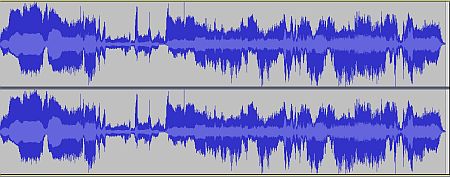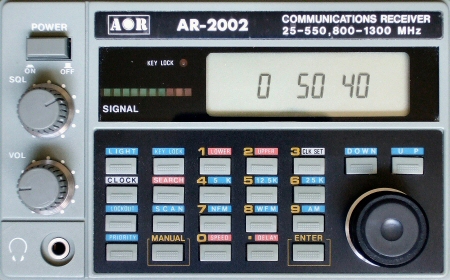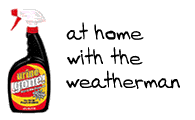
Richard Lyons, Avery Mann & girlfriend, and Myself at Snoqualmie Falls, Washington in 2005
The Stupid “T” Horn
This Is A National Emergency
Here’s the audio (National Emergency) from a previous post “The Emergency Action Notification System” with titles.
Wash Your Hands!
Untitled Strange Sounds
Here are some recordings I made using Soma Ether, SDRSharp, VSTHOST and free VST plugins.
——————————————————————————-
Here is an unprocessed recording of the Ether box. I connected it to my iPhone through an inexpensive analog-to-digital converter. A wav file was made using a recording application. The waveform looks quite unusual, as well.
Here are some links:
VSTHost server appears to be down as of this post.
VSTHost
Free VST Host
Free VST Plugins
Behringer UCA222 DAC-ADC
Apple Lightning to USB 3 Camera Adapter
Soma Ether
Airspy/SDRSharp
Background Music From Hell
Eight songs (will remain nameless) from an internet radio station that specializes in vintage background music being played through SDRSharp, software defined radio. The software radio tuner was set to capture directly from the computer sound card. Another bit of software known as a “virtual cable” was used to direct the sound from a media player or browser to the input of SDRSharp. The software tuner was set to upper sideband and de-tuned up slightly to create the dissonant effect.
The History of Wallpaper
Here is a recording made by a deceased member of Negativland, Richard Lyons, years before there was any thought of a performing group or band. It was during the time I first became friends with Richard, possibly in the mid-1970s. Richard told me later he made this using his Craig model 212 (two-twelve) portable tape recorder. Richard was even able to make a crude echo effect on this machine. Along with several “takes,” we hear Richard experimenting with recording bits from top 40 radio station KFRC in San Francisco.
Another Strange Sound From Seattle 2019
Lately, I’ve been having dreams where I can hear similar sounds. I made this entirely in my computer using VST plug-ins.
I made the video using a Winamp visualization that is a little like an old analog television having very bad reception problems.
Heavy Rain and Wind 12-18-2018
direct high-quality FLAC download or play
I used an Audio Technica AT825 stereo microphone with a Rode “synthetic fur” windscreen. A Focusrite 2i2 audio interface with my inexpensive Dell laptop computer was used to capture the audio. Listen on headphones for a better stereo effect.
 Audio Technica AT825 microphone with Rode “synthetic fur” windscreen
Audio Technica AT825 microphone with Rode “synthetic fur” windscreen
Thai Restaurant Ambience
direct high quality FLAC download or play
This was recorded on my iPhone 6S Plus using a Shure MV88 stereo external microphone while dining at a Thai restaurant in Seattle.
Collide-O-Scope Video mixes from 9-10-2018
Here are videos made by Collide-O-Scope from my appearance on Monday, September 10th in Seattle.
Buddy’s Videos
Bop A Bear
https://www.collideoscopeseattle.com/
The Laurel – Yanny Sound Butchered
This is an internet phenomenom that went viral and it all started here according to this website.
 The audio file signal was played and processed in SDRSharp and outputted through a virtual audio cable.
The audio file signal was played and processed in SDRSharp and outputted through a virtual audio cable.
 Then the audio was received from the virtual audio cable software and processed with multiple effects in VSTHost.
Then the audio was received from the virtual audio cable software and processed with multiple effects in VSTHost.
I didn’t put much thought into which effects were used or what settings were used on SDRSharp. Normally the SDR (software defined radio) software works with receivers like Airspy and Funcube, but it can also process audio files and treat them as if they were radio signals.
Analog Cellular Phone Calls 1988
This is a recording from January 1988 of mobile phone calls. The cellular phone system was analog and could be eavesdropped on if you had a radio that could receive between 800 and 900 megahertz, frequency modulation, or FM. I had access to such a receiver as an employee of Televents Cable TV in Martinez, California. Many of the service techs were issued an AOR, model AR-2002 communications receiver with an antenna tuned to around 150 megahertz. During times when there weren’t many service calls, we would drive slowly through neighborhoods with our radios tuned to one of the video carriers of the “midband” cable channels listening closely for the distinctive “sync buzz” (very close to 60 hertz with lots of higher harmonics). If the noise was detected, that was “signal leakage,” cable TV signals radiating out from the cabling, acting like a radio transmitter. This violated FCC rules as it potentially could interfere with aircraft communications. We would then start looking for loose, corroded connections. Often the culprits were “F fittings.” We didn’t stop checking for problems until the signal was at an acceptable low enough level. I noticed the radios we were using for our work, the AR-2002, tuned up through 1300 megahertz. On my days off work, I’d take the receiver home and record cellular phone calls. I’m quite sure the radio I’m demonstrating in Sonic Outlaws is the company issued unit, before I bought my own.
Most of the calls are not complete because as people driving would get out of range of one cell tower and connect seamlessly to another, the frequncy would change. I did a lot of filtering and a liitle noise reduction to clean up the audio quality. The frequency range is from just under 200 hertz to a little over 4000 hertz with extra notch filtering at 120 and 240 hertz.
Monty Python Failure
Made this from a MIDI file and a trial version of Reaper without much thought or effort.
Televents Cable TV Dispatch Early 1980s
Here is another recording of cable television employees being dispatched to various jobs around Contra Costa County, California. This time I’m on my job as service technician number 73. This was recorded on my Superscope C-104 cassette recorder with my Bearcat 300 police scanner. The Bearcat has the ability to turn a tape recorder remote switch on and off when the squelch opens and closes. I simply set it up before work and the recorder was able to capture at least part of a typical work day of myself and other workers being dipatched to service calls.
Televents Cable TV Dispatch Summer 1984
I made this recording on a day off from my job as a service technician at Televents Cable TV in Contra Costa County, California. This is a new capture just today, using my Sony TCD-5M cassette recorder. The sound is stereo with two scanner/communications radios. Most of the audio is radio channel 1 for service techs (463.875 MHz) and the other is radio channel 2 for installers (464.175 MHz). Most of the time the audio is playing channel one, but because there is a different receiver panned left and right, there is a stereo phasing and different EQ effect. I think I used an AOR AR-2002 and a Bearcat 300 for receiving. The Bearcat has more rolled off highs. Might be good listening with headphones for a binaural effect. I did not apply any noise reduction which is proper for archiving.
Sony TC-D5M
Bearcat 300 Scanner
AOR AR-2002 Communications Receiver
Possible Scam Call and Recording Demonstration
I’ve been getting this call a couple of times a week for about a month and have not received any bills, either. I figured this would make a good demonstration of how to record phone calls in high quality. This Panasonic cordless phone has the smaller 2.5-millimeter jack with three conductors. I made an adapter cable using a 2.5-millimeter plug with the tip being a microphone in and ring (middle conductor) being output and wired to the black RCA jack. The third conductor, the sleeve is a common ground for the output and the input. The red RCA jack is for a microphone and it has about 1.5 volts of plug-in phantom power for electret condenser microphones.
Recent Posts
- Buddy Is Bored
- Pencil Man
- My Stomach 2022
- 4th of July Ambience 2021
- Richard Lyons, Avery Mann & girlfriend, and Myself at Snoqualmie Falls, Washington in 2005
- New Year’s 2021
- Dirty Booper
- Lady Seiko Watch Commercial
- 4th of July Ambience 2020
- The Stupid “T” Horn
Categories
- 16 Millimeter Films
- Answering Machine Recordings/Ringtones
- Baby Room Monitors
- Booper
- Cats and Bees
- Cleaners and Cleaning Supplies
- Family Tapes
- Ham Radio Jammers
- Microphone Tests
- Music I Listen To
- My Vintage Equipment
- Open Reel Tapes
- Outside Microphone & Field Recordings
- Pictures & Drawings
- Random Audio & Video
- Street Names Update
- Uncategorized
- Weather
| M | T | W | T | F | S | S |
|---|---|---|---|---|---|---|
| « Jul | ||||||
| 1 | 2 | 3 | 4 | |||
| 5 | 6 | 7 | 8 | 9 | 10 | 11 |
| 12 | 13 | 14 | 15 | 16 | 17 | 18 |
| 19 | 20 | 21 | 22 | 23 | 24 | 25 |
| 26 | 27 | 28 | 29 | 30 | 31 | |














